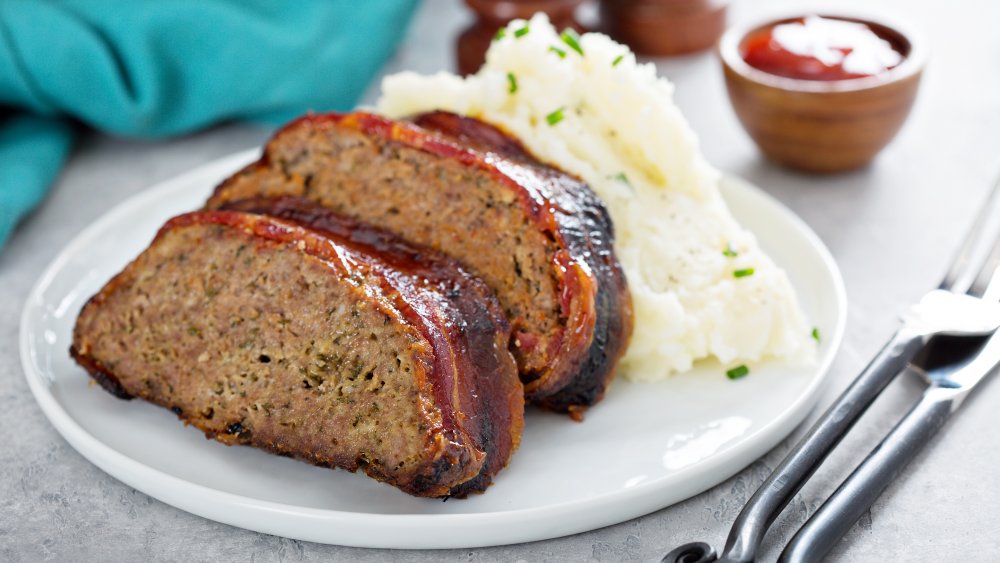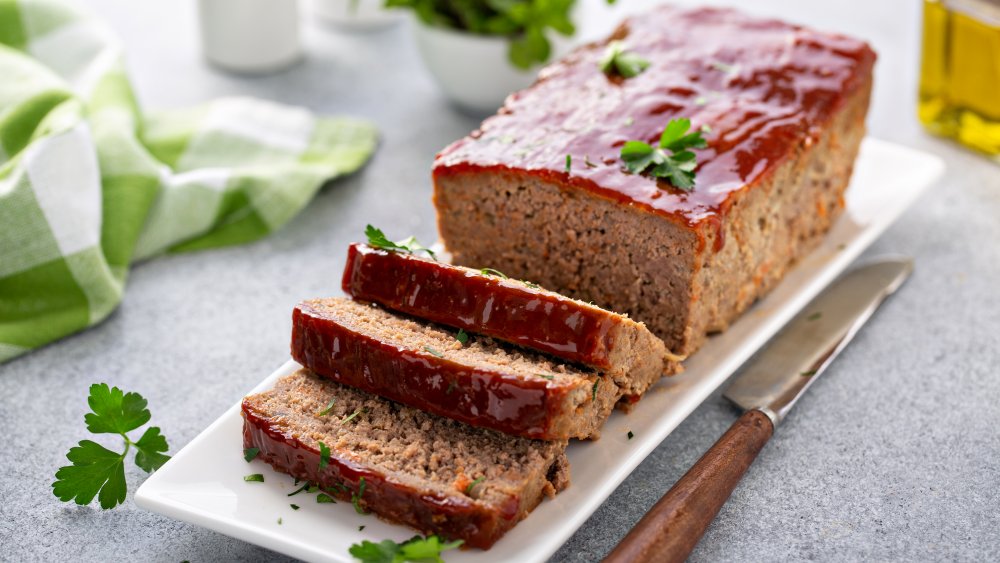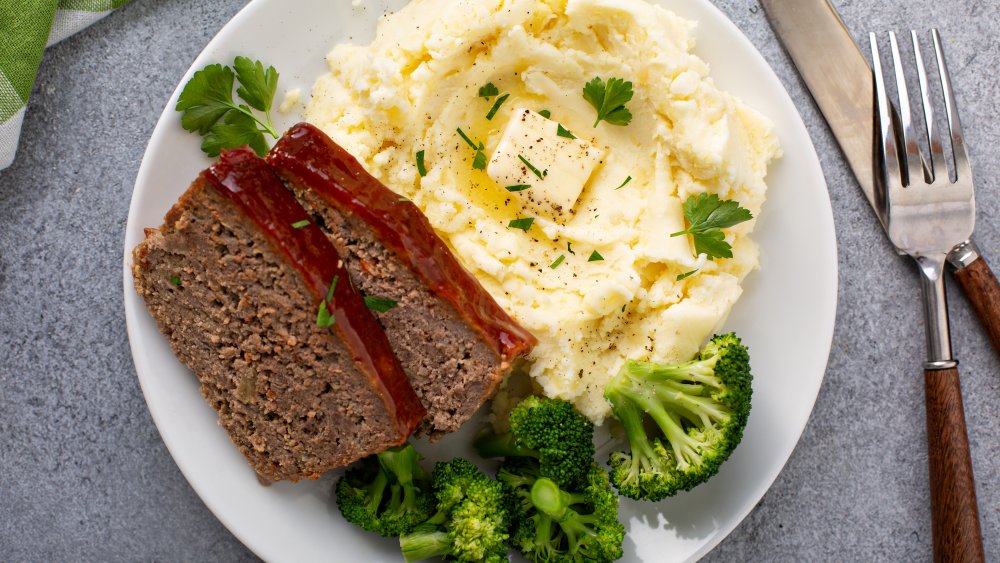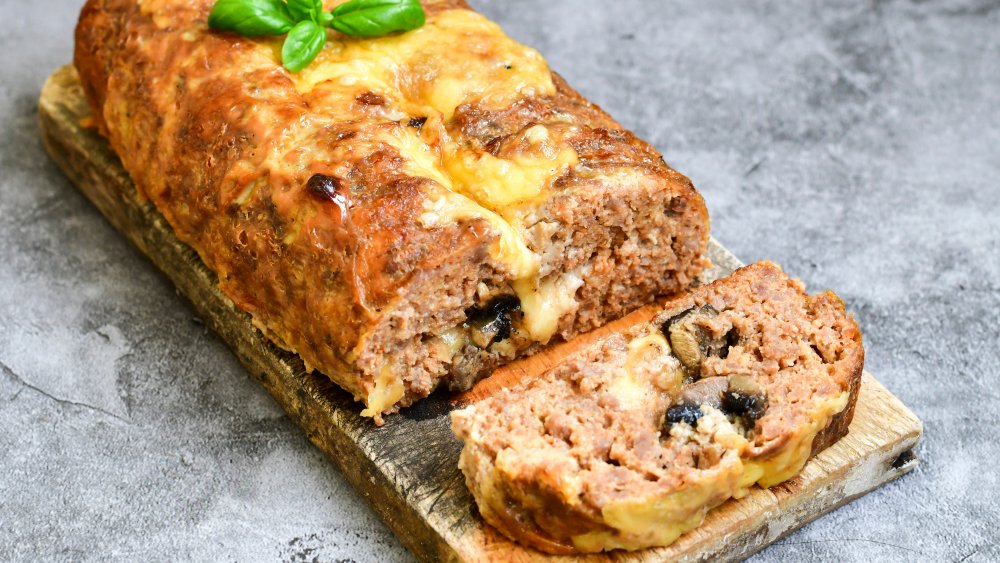What You Didn't Know About Meatloaf
Ah, meatloaf! It's one of the true staples of classic home cooking, and a meal fit for a president. A delicious portion of well-made meatloaf with a neat secret ingredient - with a generous helping of ketchup, of course – and a heaping helping of mashed potatoes is enough to induce feelings of nostalgia, possibly even in people who didn't actually have it growing up.
Meatloaf is easy to regard as one of the culinary staples of Americana, like hot dogs, hamburgers, and Mom's apple pie. However, meatloaf didn't just pop into existence as a fully formed staple of the American diet. The dish has a vast and storied history, and some of the parts in its journey are truly surprising. So, how did this legendary dish come to existence, and how did it reach its esteemed status as a home cooking go-to and a diner classic? Let's take a look at a few things you may not have known about meatloaf.
An affordable breakfast banquet and a way to use scraps
Per Bon Appetit, meatloaf was designed to be both an affordable meal and the day's most important one. That's right – back in the late 19th century, meatloaf was considered a breakfast food. Eat your heart out, bacon! The foundations for the American meatloaf and its status as an affordable, yet delicious everyday food come from the Colonial times when German immigrants made 'scrapple' from cornmeal and ground pork. The 'scrap' theme, in fact, has featured heavily in the history of meatloaf.
The very first recorded recipe for the modern iteration of the dish comes from 1870s New England, and it specifically instructed to finely chop up "whatever cold meat you have." Food historian Andrew Smith says that the people of the time and era often killed cows before the harsh winter came, so their cheap cuts were probably the chief ingredient in the era's meatloaf. Other ingredients were modern staples, like egg, bread soaked in milk, onion, and salt and pepper to spice things up.
Meatloaf took America through some tough times
Meatloaf gained a new level of prominence with the 1890s rise of the meatpacking industry when scraps were aplenty. However, it didn't truly reach its iconic status until the Great Depression, when meat grinders were already commonplace and many families quickly discovered that a huge hunk of starch-laden meatloaf was far more cost-effective than, say, a roast.
If there was any question about meatloaf's place as an all-American classic meal, its prominence during World War II cemented the meal's place in the annals of American cuisine. By the time the 1950s rolled around, the dish was already so iconic that hamburger-themed cookbooks were brimming with strange recipes, and any diner worth its salt had better make sure they had meatloaf on the menu.
Unlike its ground-meat cousins like burgers, however, meatloaf hasn't really made its mark in the world of fancy restaurants. Still, it's an excellent comfort food and one of the best, most nostalgic "everyday" meals out there. What's not to like?
Strange meatloaf versions throughout the years
Up to now, we've been discussing meatloaf as we know it today, but as the Atlantic tells us, the modern meatloaf has plenty of strange ancestors. The ancient Romans ate a chopped-meat patty, cut with wine and pine nuts. The lords and ladies of 17th century France feasted on an offal-and-meat version that was encased in gelatin.
Even the modern American version has gone through some pretty strange iterations. In the late 19th century, many folks took the basic meatloaf recipe of "meat and starch" and gave it a twist from the country of their origin. An immigrant from France, for instance, might add some ham, nutmeg, lemon rind, and other ingredients in their loaf, and coat the whole thing in a crushed-cracker breading. Meanwhile, WWII-era meatloaf recipes included Penny Prudence's Vitality Loaf, which used liver, pork, and beef, as well as the Savory Meat Loaf, in which the filler was cereal and vegetable soup. In the 1950s, some recipes were happy to add banana in the mix, while others added ... peach halves filled with ketchup.



